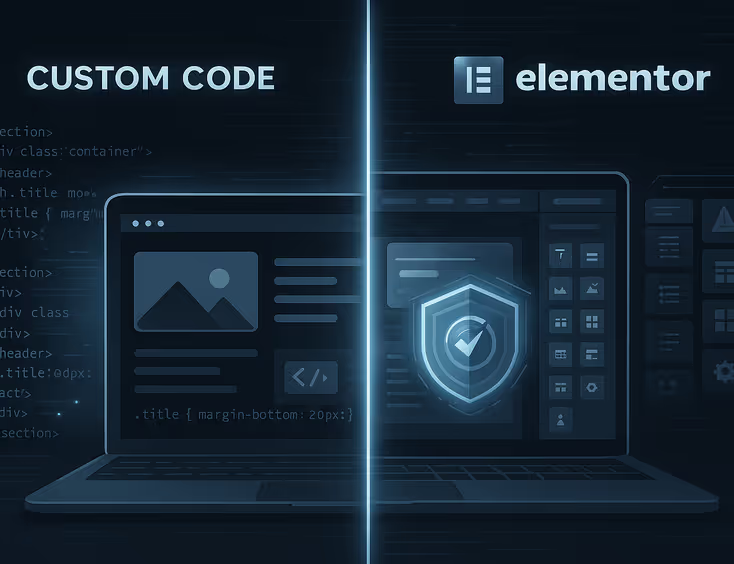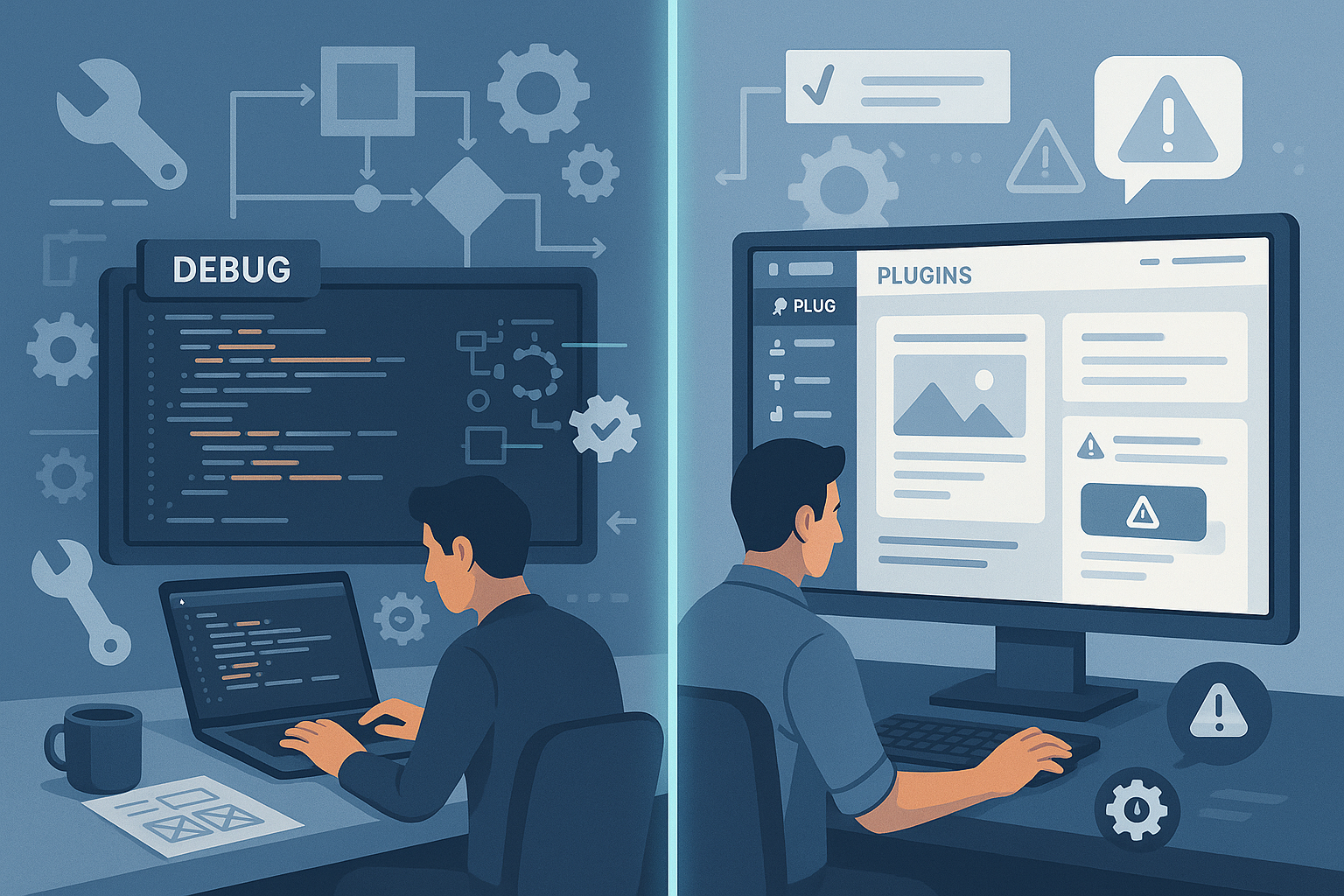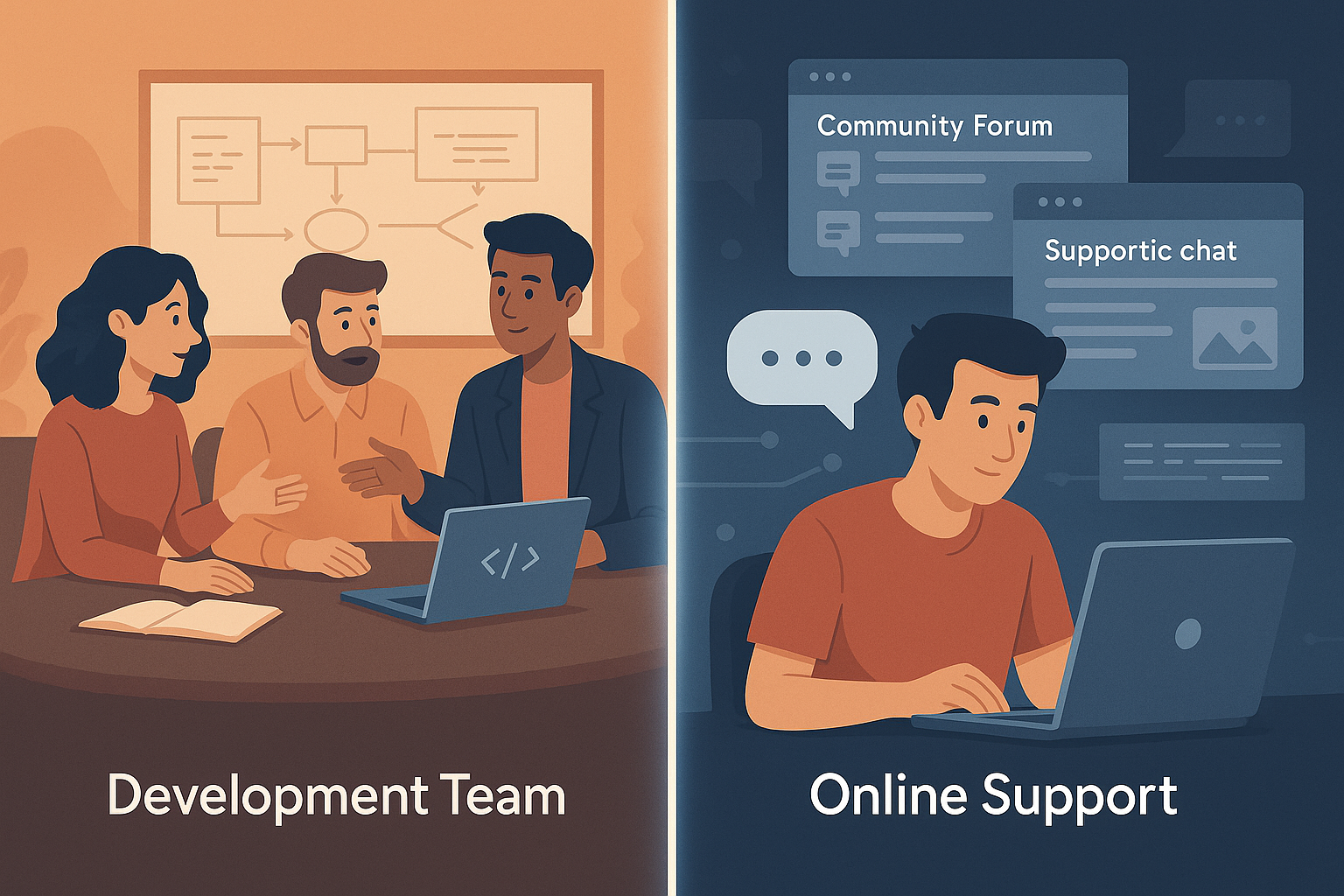
Custom Website vs Elementor Builder: A Technical Comparison

In the rapidly evolving web landscape, businesses often start with a page builder like Elementor for its speed and accessibility. Yet, as demands increase, the technical constraints of this approach frequently surface. Here’s a detailed look at the trade-offs, based on challenges faced by organizations we've worked with before transitioning to custom-built solutions.
Custom Website vs Elementor Builder: Performance
Elementor: Elementor-generated sites tend to include a significant amount of extra JavaScript, CSS, and HTML markup, much of which is non-essential for core page rendering. This can result in increased HTTP requests, heavier page payloads, and longer Time to First Byte (TTFB). Optimization is possible, but cumulative layout shifts and render-blocking resources remain common, especially as site complexity grows.
Custom Development: Custom sites are engineered to load only the scripts and styles that are strictly necessary. Unused code is eliminated, asset loading is prioritized, and tree shaking/minification is implemented where applicable. This leads to faster Largest Contentful Paint (LCP), improved Core Web Vitals, and generally better PageSpeed Insights scores.
Custom Website vs Elementor Builder: Functionality
Elementor: Functionality is tied to available widgets and third-party plugins. Extending or modifying default behavior often means adding more plugins, increasing the attack surface and potential for conflicts. Custom logic is possible but can be cumbersome and is usually injected via hooks or custom shortcodes, complicating maintainability.
Custom Development: Adding new features or making changes is a straightforward process. Each component is designed to work independently, so updates or enhancements can be integrated without causing issues elsewhere on the site. This modular approach reduces the risk of unexpected conflicts and makes it much easier to maintain and evolve your website as your needs change.

Custom Website vs Elementor Builder: Development
Elementor: Provides a WYSIWYG drag-and-drop UI, abstracting away the underlying code. While this speeds up prototyping and empowers non-technical users, the generated codebase is opaque, less modular, and can be difficult to debug or refactor for larger projects.
Custom Development: With direct access to HTML, CSS, and JavaScript, developers can build exactly what’s needed—no unnecessary code or plugin dependencies. Custom HTML provides clean, semantic markup; CSS enables precise styling and responsive layouts; and JavaScript is used to power dynamic interactions and advanced client-side features. This granular approach ensures maintainable, performant, and highly tailored solutions, allowing every component and workflow to be purpose-built for the project.
Custom Website vs Elementor Builder: Design
Mobile First
Elementor: Responsive breakpoints are configurable, but the grid/layout system often relies on absolute positioning or nested containers, leading to inconsistencies across devices. Achieving a fluid, mobile-first UX may require custom CSS overrides.
Custom Development: CSS is written mobile-first, using methodologies such as BEM. Layouts leverage Flexbox/Grid natively, and image sources are optimized (e.g., via srcset) for every device, ensuring best-in-class responsiveness and user experience.
Creative Freedom
Elementor: Designs are limited by available widgets, section structures, and the theme’s underlying CSS. Highly unique or experimental layouts may be impossible or extremely labor-intensive to implement.
Custom Development: There are no design constraints outside of browser standards. Custom animations (GSAP, CSS keyframes), SVG/Canvas graphics, and non-standard UI components can be built from scratch, precisely matching any design system or creative vision.
Pixel-Perfect Implementation
Elementor: Widget abstraction layers can introduce unwanted spacing, wrappers, or layout quirks, making pixel-perfect alignment challenging. CSS specificity conflicts are frequent when attempting to override global widget styles.
Custom Development: Every UI component is hand-coded and can be meticulously tuned to match design files. Design tokens, CSS variables, and advanced selectors enable precise implementation of brand guidelines and spacing systems.
Animations & Interactions
Elementor: Animation options are available through widget panels, but are limited to preset effects and basic triggers (hover, scroll, etc.). Custom event-driven interactions typically require external scripts or plugins.
Custom Development: Advanced animations and transitions are implemented with direct control over the DOM and rendering lifecycle. Interaction logic can be finely tailored using JavaScript frameworks or animation libraries, enabling highly engaging and performant user experiences.
Custom Website vs Elementor Builder: Scalability
Elementor: Designed for SMB-scale projects. As content volume, plugin count, and user interactions grow, database queries and DOM complexity increase, often resulting in latency and maintainability challenges.
Custom Development: Scalability is planned from the outset. Databases are normalized, caching strategies are applied (e.g., Redis, Varnish), and APIs are built to handle increased load. Static site generation, code splitting, and edge rendering (e.g., via Next.js) allow seamless scaling for high-traffic and enterprise-level projects.

Custom Website vs Elementor Builder: Maintenance
Compatibility
Elementor: Updates to the core plugin or third-party add-ons can break functionality or styling due to undocumented changes in widget markup or APIs. Troubleshooting usually requires trial and error or reliance on community support.
Custom Development: Dependencies are explicit and version-controlled, with updates tested in staging environments before production deployment. Any required refactors are managed by the same team that wrote the code, ensuring stability.
Bugs
Elementor: Most bugs originate from plugin/theme conflicts or improper widget usage. Debugging is hampered by the abstraction of the codebase and lack of clear stack traces.
Custom Development: Bugs can be traced to exact lines of code, with robust logging and monitoring in place (e.g., Sentry, LogRocket). Fixes are direct and systematic, reducing regression risk.
Errors
Elementor: Misconfigurations, plugin deactivations, or PHP errors are often surfaced via generic WordPress error messages, making diagnosis more challenging for non-developers.
Custom Development: Error handling is custom-implemented—graceful fallbacks, descriptive error messages, and real-time alerts enable faster identification and remediation.
Custom Website vs Elementor Builder: Updates
Elementor: Plugin updates are pushed by the vendor and must be managed regularly. Each update carries a risk of breaking existing functionality due to unforeseen changes or incompatibilities.
Custom Development: Update cycles are business-driven, with feature rollouts and security patches deployed via automated CI/CD. Developers have granular control over what changes, and when.
Custom Website vs Elementor Builder: Security
Elementor: Security is only as strong as the weakest plugin. Vulnerabilities in third-party components can expose the entire site. Security best practices (e.g., least-privilege, WAF, backups) are recommended, but hard to enforce across a large plugin ecosystem.
Custom Development: Security is built into the app layer—custom input sanitization, authentication/authorization protocols, and regular penetration testing. Exposure to common exploits (XSS, CSRF, etc.) is minimized by not relying on generic code.

Custom Website vs Elementor Builder: Support
Elementor: Support is primarily via documentation, community forums, or vendor support tickets. Issue resolution speed depends on the community or vendor backlog.
Custom Development: Support is delivered by the original dev team or a dedicated agency, with in-depth system knowledge and access to the full codebase and infrastructure.
Custom Website vs Elementor Builder: Takeaways
For many organizations, the initial convenience of Elementor eventually gives way to real technical constraints—performance bottlenecks, design inflexibility, code bloat, and scaling hurdles. These are challenges we've seen repeatedly in businesses who later opted to move to a custom-built solution.
Custom development offers unparalleled control, maintainability, and future-proofing. For businesses with evolving requirements, performance goals, or ambitions beyond the basics, a custom website remains the optimal technical foundation.


